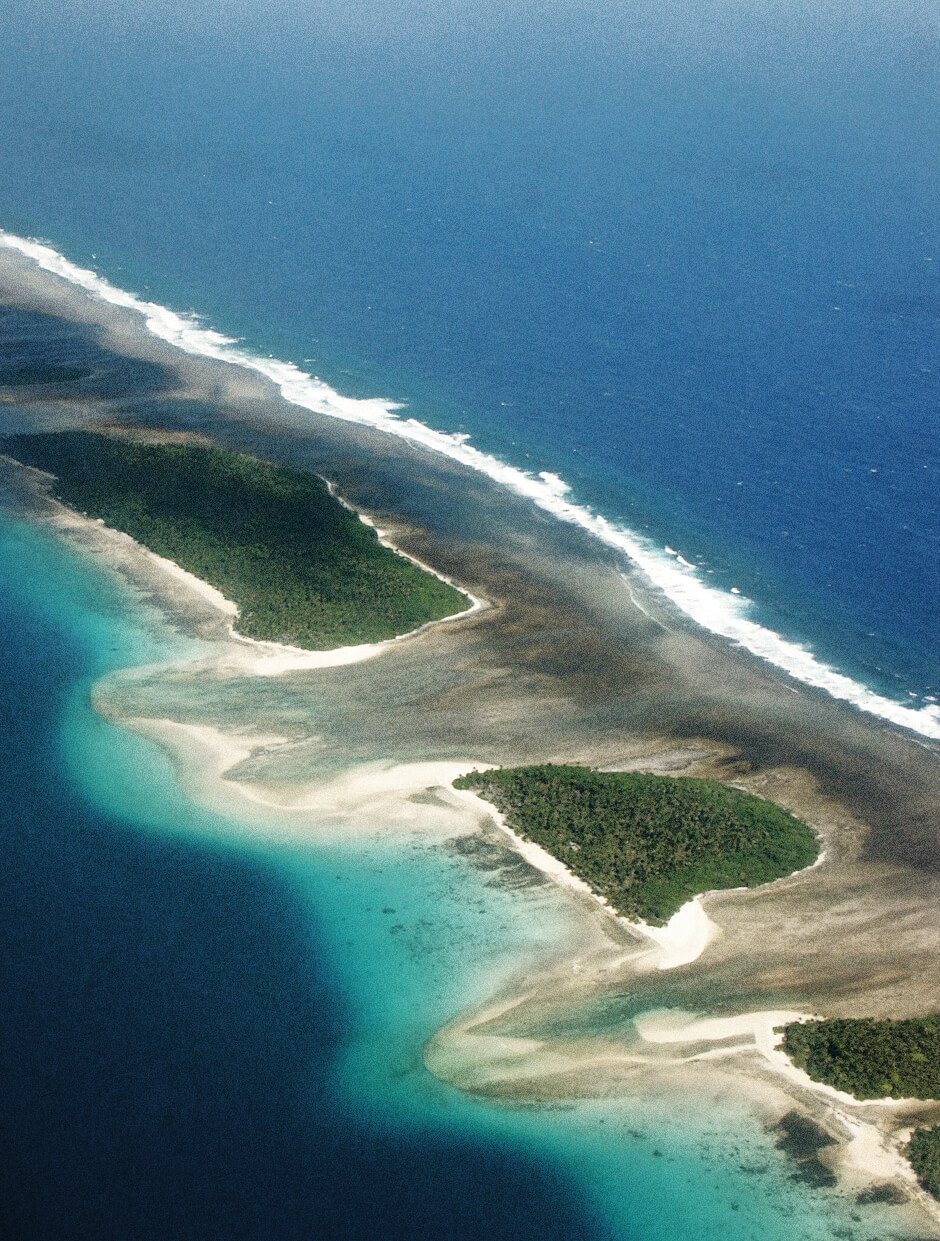PARADISE LOST
WHAT’S AT STAKE FOR SMALL ISLAND NATIONS AT COP26
An acronym for Conference of the Parties, COP began in 1995, when leaders and officials from all over the world gathered in Berlin to discuss solutions to the threat of climate change, a term which has since been rephrased as the climate crisis, to reflect the peril – and, by extension, the inaction of said leaders – the Earth now finds itself in.
This year, representatives from 197 nations are meeting in Glasgow, Scotland for COP26. Joining them are activists and delegates from environmental organizations such as Parley, and lobbyists from polluting industries keen to maintain the status quo. Billed as the most important summit in the planet’s history, this year’s COP is headlined “Keeping 1.5 Alive”, a reference to the landmark 2015 agreement in Paris where 195 countries signed up to the goal of limiting global warming to within 2°C of pre-industrial levels.
While the Paris agreement was caveated with the notion of keeping global warming “ideally” under 1.5°C of pre-industrial levels, six years on, temperatures have already risen by 1.1°C, leaving not much wiggle room at all. In fact, under current conditions, the United Nations estimates that the planet’s average temperature is set to rise by 2.7°C, with catastrophic effects on all of Earth’s ecosystems, risking tipping points such as the thawing of large areas of permafrost, which would release huge amounts of methane – a greenhouse gas which is 80 percent more potent than carbon dioxide at warming the atmosphere –and melting the ice caps to such an extent that 275 million people across the world would find their cities swallowed by the rising seas.
The stakes have never been higher, especially for small island nations for whom rising sea levels pose an existential threat. As Ibrahim Mohamed Solih, President of the Republic of the Maldives, explains “we suffer from problems that we didn’t create, and materials we didn’t invent. With 80 percent of the country lying less than a meter above sea level, and global sea levels rising between three and four millimeters a year, it is predicted that the Maldives could become uninhabitable as early as 2050, as wave-driven erosion becomes more common and freshwater scarcer, and warming water temperatures along with rising acidity levels threaten the coral reefs which provide natural protection.
In fact, under current emissions, the Maldives might even disappear before the end of the century: a paradise well and truly lost.
Meanwhile, in the Pacific, “You might as well bomb us,” the president of Palau despaired at the “slow and painful death” his country is witnessing, in his speech in Glasgow on the summit’s second day, no doubt highly aware of the situation in nearby Vanuatu, where residents have already been forced to flee one island due to rising sea levels. Vanuatu is considered the world’s most vulnerable nation to the effects of global heating, despite it being one of the world’s lowest emitters of greenhouse gases – and the country even considered launching a legal challenge, seeking reparations for crimes against the climate.
The Marshall Islands, a sprawling archipelago of 1,200 volcanic islands and coral atolls halfway between Hawai’i and the Philippines, have taken a different approach. As the founding member of the High Ambition Coalition, an alliance of 100 countries helping to secure the 1.5°C temperature goal, the Marshall Islands are one of the key negotiators at COP, despite being one of the world’s smallest nations with a population of just 60,000.
While many have welcomed the commitments made over the opening days to phase out coal-fired power plants, in Prime Minister Mia Mottley of Barbados’ address to the COP opening ceremony, she criticized the commitments made by some as based on “technologies yet to be developed,” which is at best “reckless” and at worst, “dangerous”. As a small island out in the eastern Caribbean, Barbados is especially vulnerable to hurricanes, which have only become more intense in recent years. Mottley’s speech highlighted that financing to mitigate climate change in small island nations had actually declined by 25 percent in 2019—and that shortfall will be measured in the “loss of lives, and livelihoods in our communities.”
For this COP summit to be considered a success – i.e., for it to save life on Earth as we know it – there has to be legally binding, government-mandated limits on the use and extraction of fossil fuels in all their forms. In real terms, this means reducing the amount of greenhouse gases released into the atmosphere by at least 45 percent by 2030.
From the point of view of the oceans, this would include a ban on the production of new plastic. Plastic is intrinsically linked to climate change: for every kilogram of plastic produced, six kilograms of carbon dioxide are released into the atmosphere. As plastic is made from oil and natural-gas derived ethane, its production is responsible for almost one-third of the US’ total ethane emissions. And of course, single-use plastics make up a huge portion of marine pollution, harming marine life and preventing oceans from trapping CO2.




